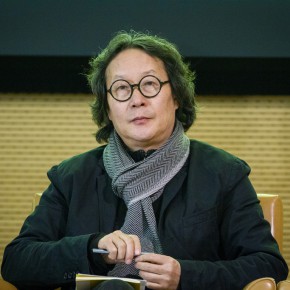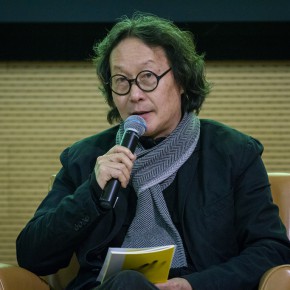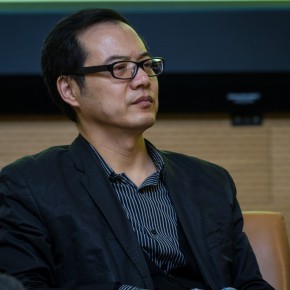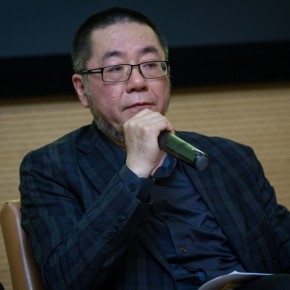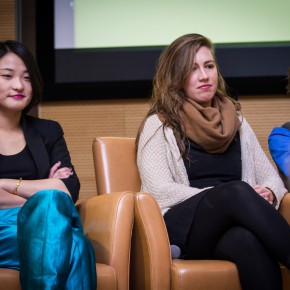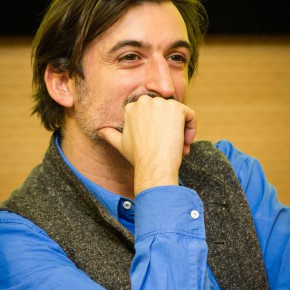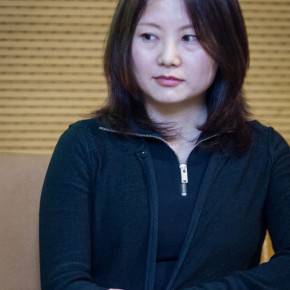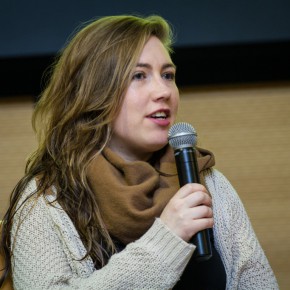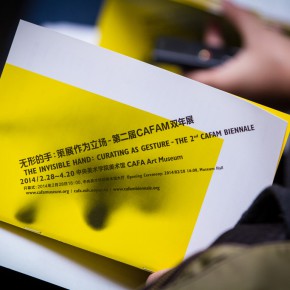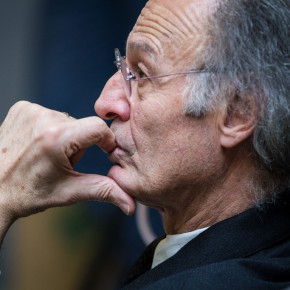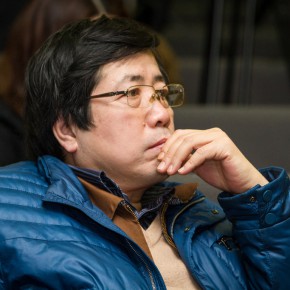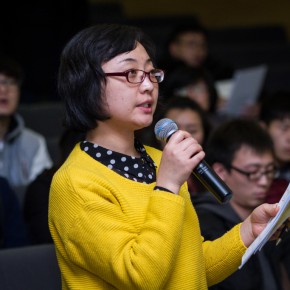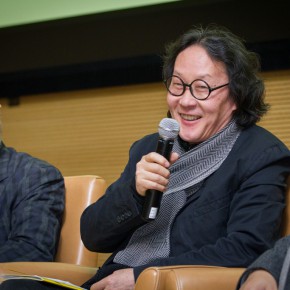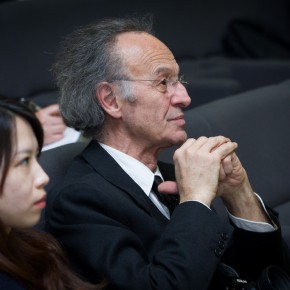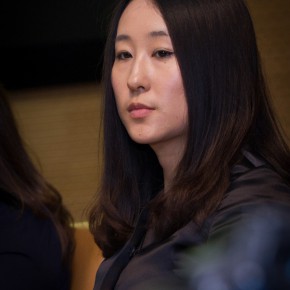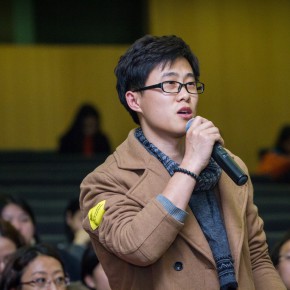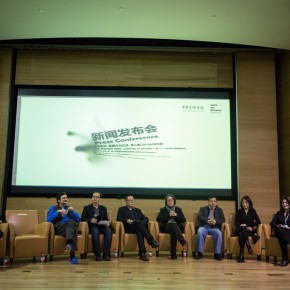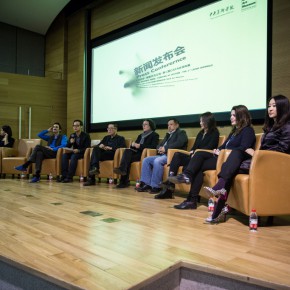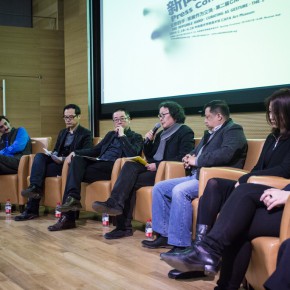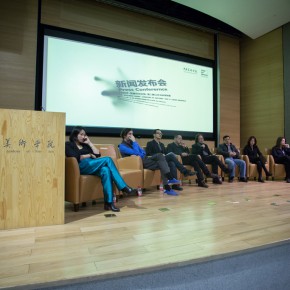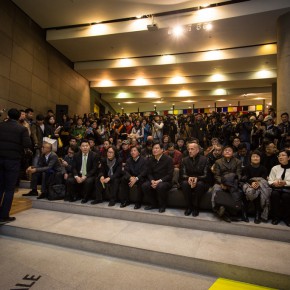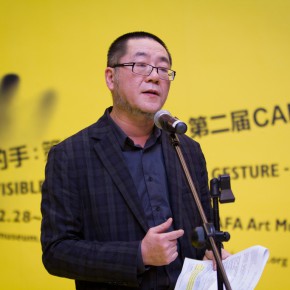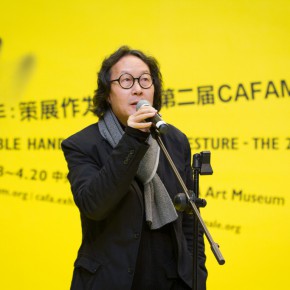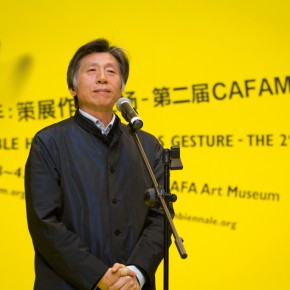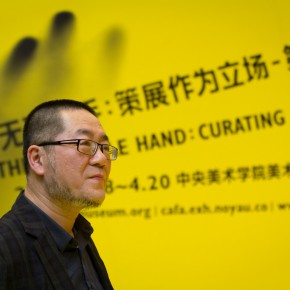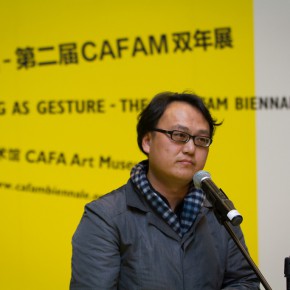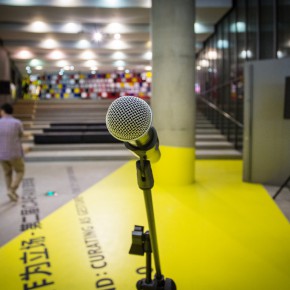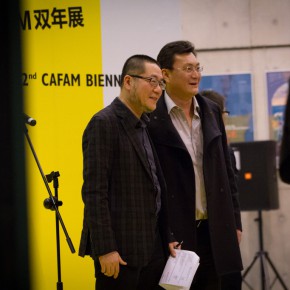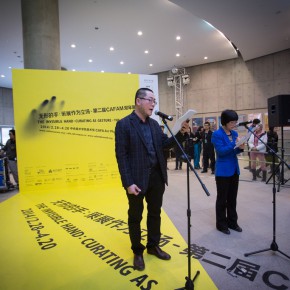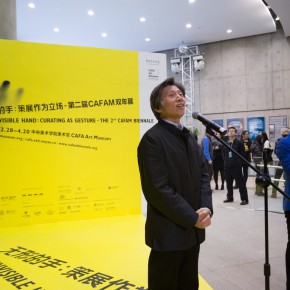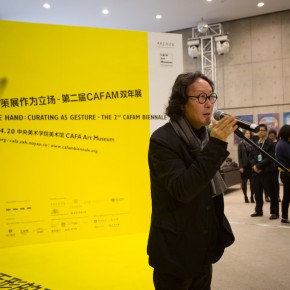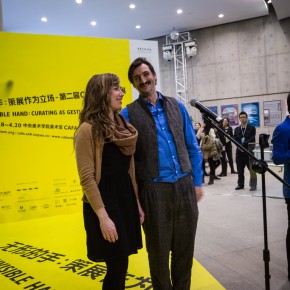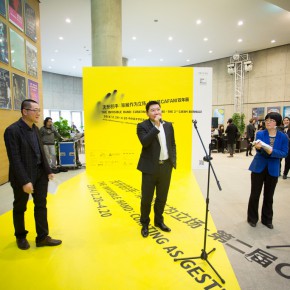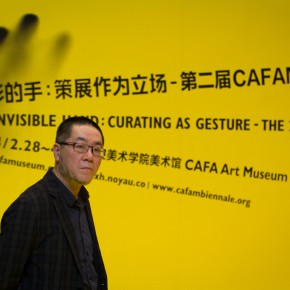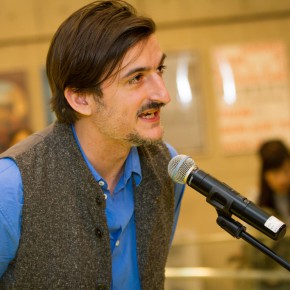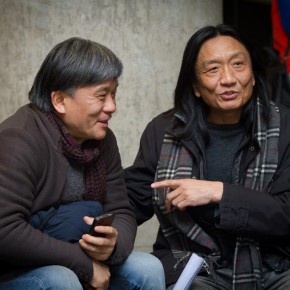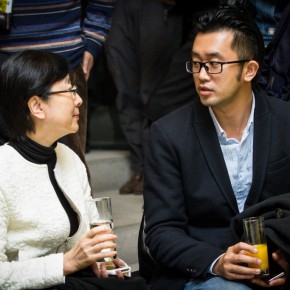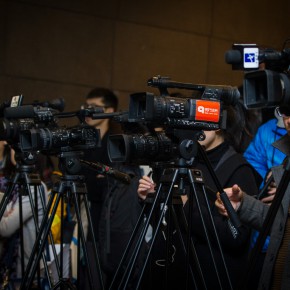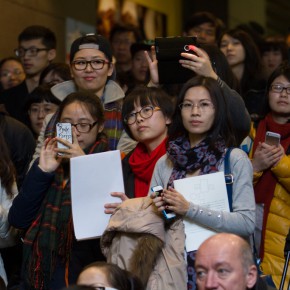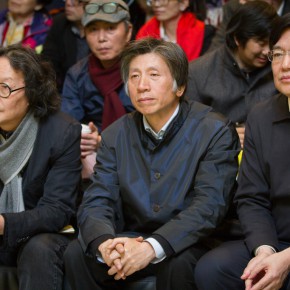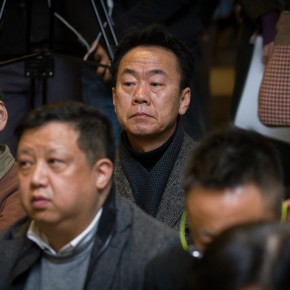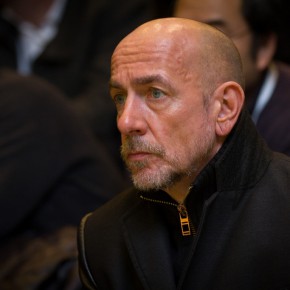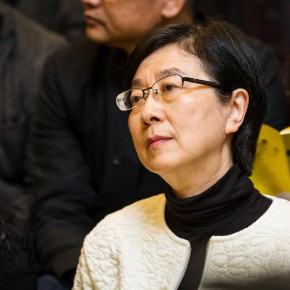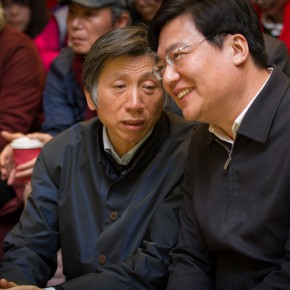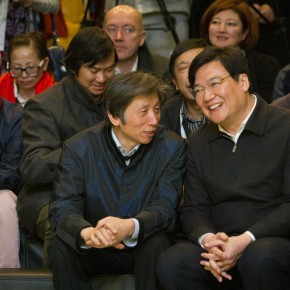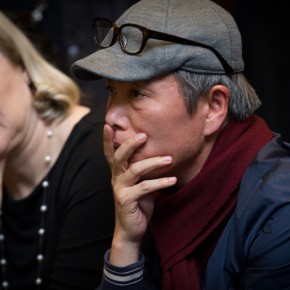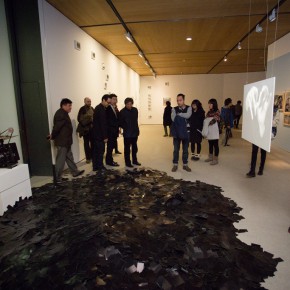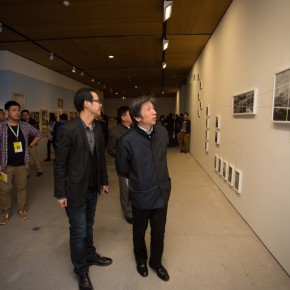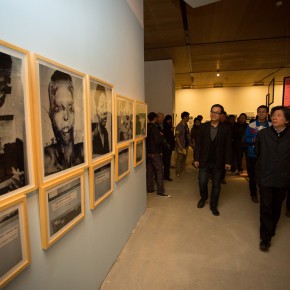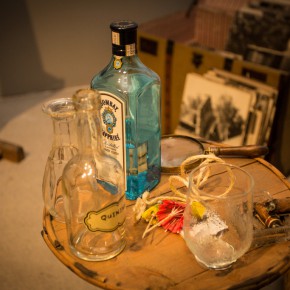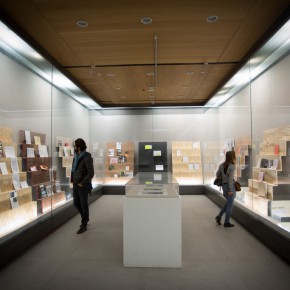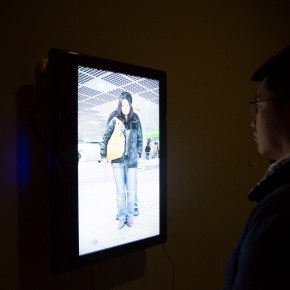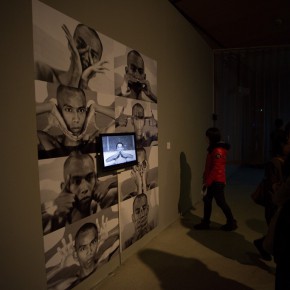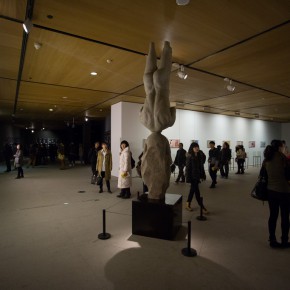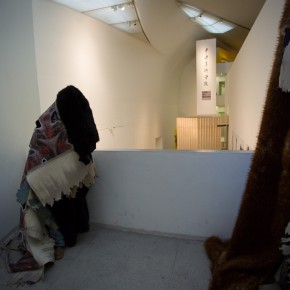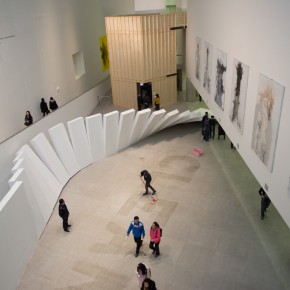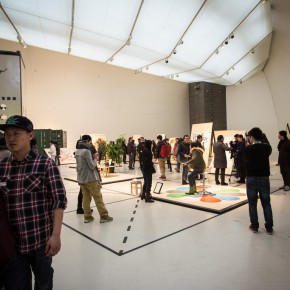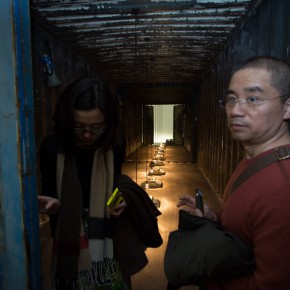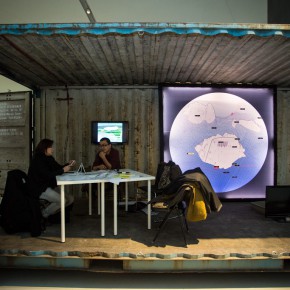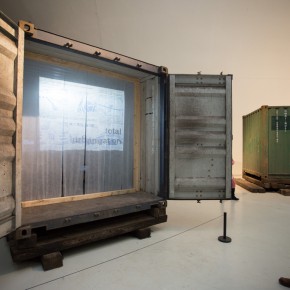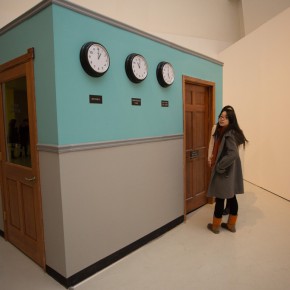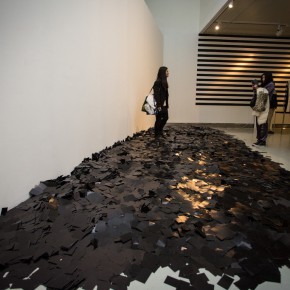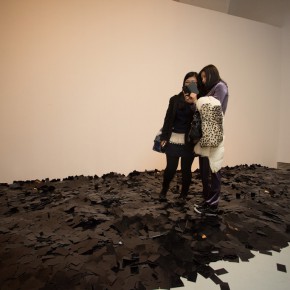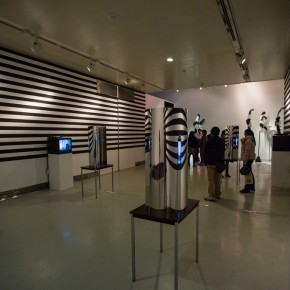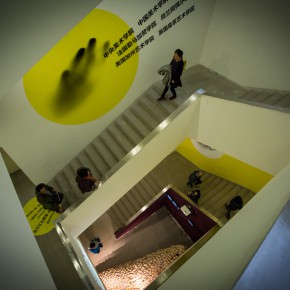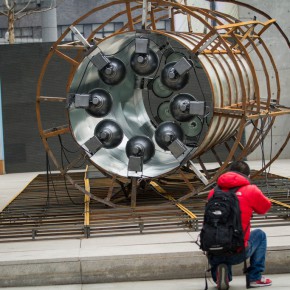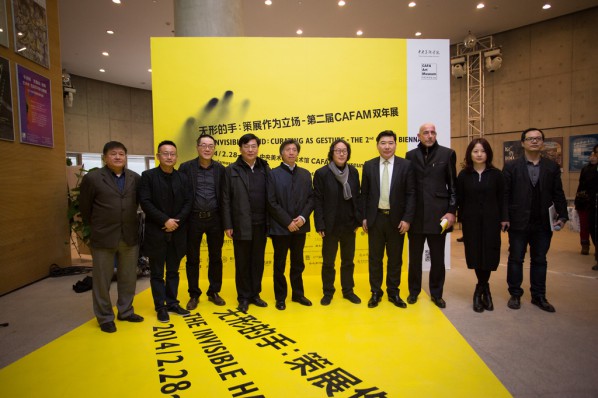
February 28, the 2nd CAFAM Biennale “The Invisible Hand: Curating as a Gesture” was unveiled at the CAFA Art Museum. The CAFAM Biennale is organized by CAFA Art Museum every two years. The first exhibition “Super Organism: A Unique Research Perspective and Experiment” was held from September to November 2011. The exhibition was well-received by the public and called “the best exhibition of 2011″ by many institutions and media outlets.The 2nd CAFAM Biennale, entitled “The Invisible Hand: Curating as a Gesture” has retained this international, contemporary, and avant-garde academic focus, exploring the spirit, features, and characteristics of contemporary culture, artistic development, and experimentation.The exhibition will remain on view through to April 20, 2014.
This CAFAM Biennale brings together academics from curatorial studies departments at important art academies in China and abroad to serve as academic advisers, as well as outstanding young people with curatorial degrees to serve as curators. Together, they make up an innovative, inspiring, and experimental curatorial team, which will curate, organize, and execute this CAFAM Biennale. These recommended curators curate and present artistic themes and artists based on their academic interests. As a result, their curatorial practice is linked to art education and contemporary art in a way that promotes curatorial and artistic practice. Six Curators are(in alphabetic order according to surname):Kit Hammonds / HU Danjie / Angela Jerardi / MA Nan / Veronica Valentini / Xiaoyu WENG.
At the press conference, Xu Bing, Vice President of CAFA initially said it was “necessary” and “exceptional” for CAFA to organize a large scale international CAFAM Biennale. It was necessary that the academy focus on the forefront of contemporary art while inspecting its developing trends, to provide a rich and full confidence and nutrient in the faculties and students; In addition, the professional curator is a young field, which was in need of more academic attention and research, because the limitation and issue of the field has gradually become prominent in recent years, CAFA focused on it being the subject, which is necessary to unfold academic discussions. It was exceptional since it bases itself on the platform of the academy, introducing the mode of biennale to the campus, and connecting with young curators and artists. Comparing the curating ideas by juxtaposition of the six international universities on the same platform was beneficial to sort out and discuss curatorial theories.
Curator Wang Huangsheng briefly summarized the targets of the biennale including firstly that the academy was the academic platform, secondly with an international cultural vision, thirdly focusing on the issue of the present frontier. As one of the exhibition academic directors, Professor Yu Ding said, in the contemporary global pattern, the conceptual conflict and mutual cooperation appeared in the project jointly planned by the six international academies as the bright spot, and it offered a path for the field of curatorial education. Following that the six curators respectively briefed their individual sections and themes.
At the opening ceremony after the press conference, Gao Hong, Party Secretary of CAFA, Vice President Xu Bing, Fan Di’an, Curator of National Art Museum of China, Gao Shiming, member of the academic committee of the exhibition, cultural counsellors and officials from the Embassy of the United States, French Embassy, Goethe Art Institute, curators and representatives from Today Art Museum, Guangdong Museum of Art, Shannxi Art Museum, Guangxi Art Museum, Hubei Museum of Art, Fujian Art Museum, Henan Art Museum, He Xiang Ning Art Museum in Shenzhen, Shanghai Rockbund Art Museum, Art Museum of Nanjing University of the Arts, and the sponsors including heads of Beijing 798 Cultural Creative Industry Investment co., LTD., and Times Property attended the opening ceremony. Gao Hong, Fan Dian and Xu Bing highly praised the exhibition. Fan Dian said, CAFAM Biennale fully embodied a pioneering vision and the mind of CAFA, to contact with society, which was exciting and triggered improved communication.
Since the 1990s, the biennial model has spread throughout the world. Contemporary art is flourishing, and curators play a decisive role in today’s art world. Here, the organizers attempt to make sense of the development of curatorial practice. The starting point for our investigation was the early twentieth century, a time when avant-garde art was just beginning. From there, we investigate curatorial history, practice, theory, and education, as well as exhibition methods over the course of five chronological sections: pre-twentieth century, early twentieth century, the 1960s to the 1970s, the 1980s, and the 1990s to the present. We can see the gradual expansion of curatorial practice, the clarification of the curator’s role, the consolidation of curatorial discourse, the professionalization of the role of curator and the organization of curatorial history. This process highlights important issues, such as the intersections and collisions between artistic creation and curatorial practice and the self-conscious and self-reflective tendencies of curators as a group.
Because this is an international and cross-cultural biennale of curatorial practice, the organizers want to emphasize that the issues and topics presented by the curators transcend personal experience; these ideas rise above the current contexts, existing categories, and the individual media of many art exhibitions today. This biennale is not simply an isolated exhibition planning and execution; it is a kind of academic exercise that transcends curatorship. The biennale reflects upon history and establishes dialogues between disciplines, while using art to highlight the concerns and features of the international community today. In addition, because this is an international biennale, they had to seriously consider the translation of concepts, artworks, and languages. Linguistic communication is always a cultural event, developing and evolving with culture. Language is related to the translation of texts, behind which lies the transfer, transmission, and interpretation of cultural concepts. Hence, with goals and methods that transcend experience, curatorship, and translation, they are hoping that this new biennale will highlight and promote contemporary curatorship as a mode of structuring knowledge and integrating art and life through an academic education and social practice.
About the exhibition
Six Sections of the Biennale (in Chinese Pinyin order)Section 1: Game Theory
Curator: Angela Jerardi (de Appel arts centre, Netherland)
Section 2: The Code of The Golden Bough—Economics of Witchcraft, Soul, and Faces
Curator: HU Danjie (China Central Academy of Fine Arts)
Section 3: No Puppet Is Dumber Than Its Puppeteer
Curator: Kit Hammonds (Royal College of Art, London)
Section 4: The Museum Cellar
Curator: MA Nan (China Academy of Art)
Section 5: On Ambiguity and Other Forms to Play With
Curator: Veronica Valentini (Ecole du Magasin, Grenoble, France)
Section 6: Parliament of Things, or, Wandering in a Continuously Bewildering Wonder
Curator: Xiaoyu WENG (California College of the Arts, San Francisco, USA)
Curatorial Genealogy
Academic Committee
Art Director-General: PAN Gongkai / XU Bing
Art Director: WANG Huangsheng
Academic Director: YI Ying
Coordinator: WANG Chunchen
Curating Advisors (in surname alphabetic order): Yves Aupetitallot / Ann Demeester / GAO Shiming / HOU Hanru / Leigh Markopoulos / Victoria Walsh / YU Ding
Curators (in surname alphabetic order):Kit Hammonds / HU Danjie / Angela Jerardi / MA Nan / Veronica Valentini / Xiaoyu WENG
Organizer: CAFA Art Museum
Academies: China Central Academy of Fine Arts / China Academy of Art / California College of the Arts, San Francisco, USA /de Appel arts centre, Amsterdam, the Netherlands / Ecole du Magasin, Grenoble, France / Royal College of Art, London
Co-organizer: Beijing 798 Culture Creative Industry Investment Company Ltd. / Times Property
Premium Partner: Shao Foundation
Supported by: Times Museum / Da Tang Art Foundation / Goethe-Institut China / The American Embassy in China / British Council / the Journal of Artistic Research / UCL Slade School of Fine Art, London
Chief Strategic Media Partner: Modern Media Group | LEAP / The Art Newspaper China
Courtesy of the artists and CAFA Art Museum, for further information please visit www.cafambiennale.org.
Photo by Hu Zhiheng and edited by CAFA ART INFO.


